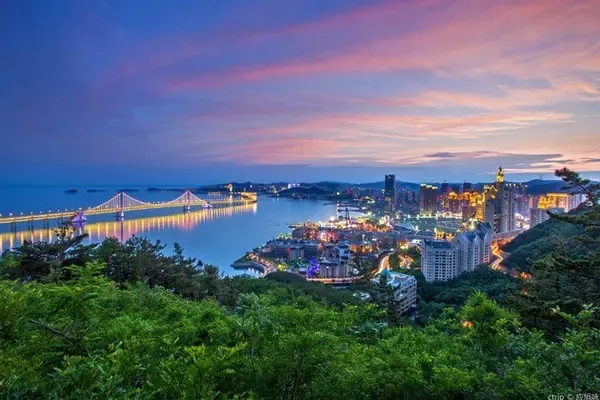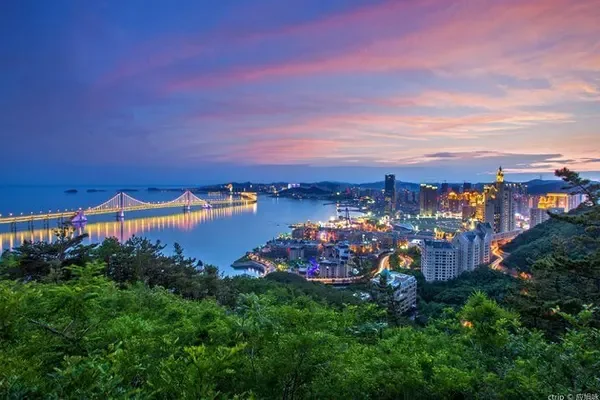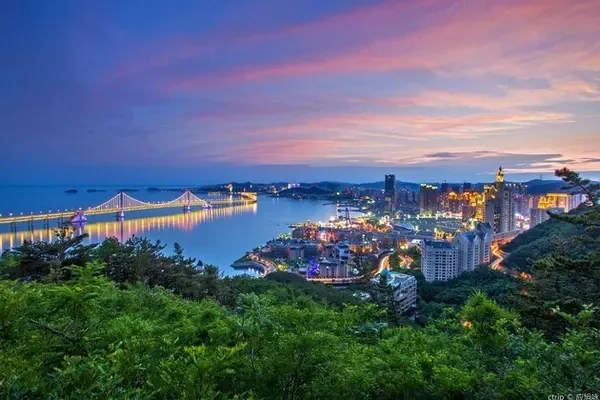"Shanxi Daily" September 8, 2022, page 8
Yuncheng is a magical land. Since then, the Yellow River has flowed eastward, and this place was first called China. Yuncheng, located in the arms of the Yellow River, was called "Hedong" in ancient times and is an important birthplace of Chinese civilization. Yuncheng has 102 national-level cultural relics protection units, ranking first among prefecture-level cities in the country.
The beauty of Yuncheng also lies in nature. The power of nature endows Yuncheng with a unique endowment. The Zhongtiao Mountain stretches from east to west, with changing scenery; the ancient salt lake stretches for hundreds of miles, colorful;
In recent years, Yuncheng has vigorously developed the cultural tourism industry, continuously promoted the high-quality development of the city's cultural tourism industry, and built a well-known tourist city in an all-round way. The rich natural resources and historical relics of Hedong are blooming new vigor and vitality. On September 25, 2021, in order to promote the development of the cultural tourism industry, Yuncheng launched the selection of "Eight Views of River East" with the classic natural landscapes and cultural landscapes in its territory as the main objects, and finally determined the most representative "Eight Views of River East" , namely: Yichi Yicai (Yuncheng Salt Lake), Ancestral Temple Flying Dragon (Jiezhou Guandi Temple), Stork Tower Jimu (Stork Tower), Shunbai Xunfeng (Shun Emperor Mausoleum), Yongle Chaoyuan (Yongle Palace), Pujiu Toad Sound (Pujiu Temple), Yuzhu Xiaju (Wulaofeng), Xihou Sacred Fire (Xihoudu Ruins).
The eight scenic spots are a tradition of landscape evaluation established in our country, and they are also an important reflection of the natural features, history and culture of a region. The selection of the Eight Views of the River East is an innovative action that endows the era connotation of China's excellent traditional culture, fully demonstrates Yuncheng's profound cultural heritage, promotes rich tourism resources, gathers development forces, and enhances the influence of Yuncheng's global tourism.
"Hedong Eight Scenery" is the memory collection of Yuncheng people, and it is a must-see resort for tourists.

Yuchi Yicai
Xiaopo reflects the brilliance and green mountains, and the scenery is beautiful and beautiful. The salt lake is changing and colorful, and the Yuxiu Zhongling is unique from ancient times.
The colorful pool of Yuchi connects to the sky, and endless treasures gather in the east of the river. Yuncheng Salt Lake, also known as "Yuchi".盬 is the exclusive character of Yuncheng Salt Lake. Yuncheng Salt Lake is one of the three largest sodium sulfate inland salt lakes in the world, which has a great influence on Chinese civilization. The algae and saltwater worms in the salt lake reproduce, causing the lake water to change into various colors, with both colorful colors, just like a giant palette, full of colorful pigments and colorful colors.

Ancestral Temple Flying Dragon
The ancient cypresses are long and the crown is male, and the Qiongzhi is green and green. The Huli Wu Temple flourishes in spring and autumn, and the ancestral hall is majestic for generations.
He was brave and loyal to support the Shu Han, and wrote his name with sincerity and sagehood. Guandi temples are spread all over the country, and the Guandi Temple in Xiezhou, the hometown of Guan Gong, is known as "the ancestor of Wu Temple". In front of the Spring and Autumn Building in the temple, the crowns of four cypress trees grow naturally, forming the appearance of green dragons soaring into the sky. Guan Gong is said to be the incarnation of the green dragon, and the natural scene in Guandi's ancestral temple echoes the legend of Guan Gong, and tourists are all amazed.

The Stork Tower
Climb the Stork Tower as far as the eye can see, and the painting style pays off with the surge of the Yellow River. If you want to be poor for thousands of miles, the vicissitudes of life will be strong, and Xia Manshun will shine in Jinqiu.
The sun is at the end of the mountain, and the Yellow River flows into the sea; if you want to see a thousand miles, go to a higher level. The Guanque Tower is famous for its poem "Climbing the Guanque Tower" and is one of the four famous buildings in China. The Guanque Tower has always been a resort for climbing high places, standing in the Jin Dynasty and looking at the Qin Dynasty, looking forward to the beautiful mountains in Zhongtiao, looking down at the rushing river, looking at the sunrise at Dongshan in the morning, and enjoying the red clouds in the sky at night. If you want to go upstairs in life, you must go to the Guanque Tower in Yuncheng.

Shun Bai Xunfeng
The ancient trees are dark and secluded, the dragons and cypresses are tall, and the garden of Shun is lush and crowned. The sages have become immortals, and the five sons have passed the imperial examination.
The Millennium Emperor Shun's Mausoleum, the ancient cypress Hongde Xiao. The Mausoleum of Emperor Shun is located in Mingtiaogang, Yanhu District. The "husband and wife cypresses" in the park have "sons and grandchildren cypresses" that lead the young and help the old. The old trees naturally correspond to each other, which interprets the spirit of Emperor Shun's "virtuous government for thousands of years, filial piety in the world".

Yongle Dynasty
The murals of the Chaoyuan Dynasty have been handed down for a long time, and they are vivid and lifelike. The unique skills are vivid and colorful, and the Taoist palace is full of pink and blue.
At that time Lu Zu was worshipped, and the painted walls are still intact today. The murals of Yongle Palace are one of the treasures of ancient Chinese mural art, and the "Chaoyuan Picture" in the Sanqing Palace is the most magnificent. This mural shows the grand scene of 290 Taoist gods worshiping Yuanshi Tianzun. The composition of the picture is magnificent, the brushwork is vivid and vivid, the colors are magnificent, the characters are all radiant, and the expressions and movements are not the same. It represents the highest achievement of Taoist murals in the Yuan Dynasty and is also the largest figure painting in ancient China.

General rescue toad sound
In the sunset and sunset, the trees are densely shaded, and the scenery is beautiful and elegant. The sound of the toad hitting the stone spreads far, and the text ripples beside the Yingying Pagoda.
May all lovers in the world become family members. Pujiu Temple is the place where the story of "The Romance of the West Chamber" took place, and Pujiu Temple is famous both at home and abroad. The relic pagoda in the temple is famous because of "The Romance of the West Chamber", so it is called Yingying Pagoda. The structure of the tower is peculiar and has an echo effect. Hit the ground with stones on the side of the tower, and the echo reflected on the tower is clear and sweet, like the sound of frogs. "Pujiu Toad Sound" is one of the eight ancient scenic spots in Yongji. When tourists come here, they have to hit stones under the tower to experience the wonder of echo.

Yuzhu Xiaju
The five elders become immortals, Yu Zhuxiong, and the beautiful clouds surround the long sky. Where the Songtao River Waterfall lingers, the Taoist confers the river map to look up to the emperor.
In the south is the Taoist Wulao Peak, and in the north is the Buddhist Wutai Mountain. Wulaofeng, a scenic spot in Yongji City, is named after the legend that the ancient Wulao gave the emperor the "River Map" and "Luoshu" here. Wulaofeng is composed of five peaks, the sea of pines and clouds, flowing springs and waterfalls, strange peaks and strange rocks. The main peak, Yuzhu Peak, stands thousands of feet high and shrouded in clouds and mist all the year round. The peak seems to be lifted by the colorful clouds, just like a fairyland on earth.

Xihou Torch
Bingwenjing at the Xihou site, the torch is passed down to the world. People who believe in dragons open the field of painting, and the scenery is bright through time and space.
The waves wave and wind wind Lingdu, the holy fire of Xihou reflects civilization. The Xihoudu site is the oldest known Paleolithic site in China and the earliest remains of human fire in China. The torch for the Second National Youth Games was collected here. Today's Xihoudu site has been opened up as the Holy Fire Park. There is a main space building with a strong sense of design, which introduces sunshine in the form of "a line of sky", integrates the sense of historical vicissitudes and modern design, and becomes a fashionable check-in place sought after by tourists.



